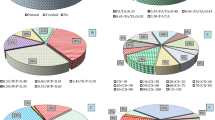Abstract
The strength of the bond between concretes is attributed to surface roughness. Therefore, it is necessary to quantify the roughness of concrete surfaces. In the traditional method, concrete surface roughness is measured using the sand filling method, which is contacting, inefficient, and destructive. Accordingly, this paper proposes an edge detection-based method for measuring concrete surface roughness. By combining pixel and sub-pixel edge detection, aggregate edges are extracted and a relationship curve between edge frequency and concrete surface roughness is fitted using the least squares method to achieve a non-contact, stable and non-destructive measurement. Experimental outcomes indicate that the accuracy of the method for measuring concrete surface roughness can reach 94.7%. Additionally, a single-input, single-output neural network model based on calculated edge frequencies is constructed with a measurement accuracy of 95.4% for concrete surface roughness detection.










Similar content being viewed by others
Explore related subjects
Discover the latest articles, news and stories from top researchers in related subjects.Data availability
The datasets generated during the current study are available from the corresponding author on reasonable request.
References
Valikhani, A., Jaberi Jahromi, A., Pouyanfar, S., Mantawy, I., Azizinamini, A.: Machine learning and image processing approaches for estimating concrete surface roughness using basic cameras. Comput.-Aid. Civ. Infrastruct. Eng. 36(2), 213–226 (2020)
Shuting, Hu., Huang Fangcheng, Hu., Kangjun, X.J., Weiliang, J.: The detection method of three-dimensional roughness of on-site concrete based on 3D scanning technology. Cryogenic Build. Technol. 42(09), 30–33 (2020)
Guoxin, Y., Xiaolei, Z., Leishun, Z.: Evaluation method review of the interfacial roughness of new to old concrete. Concrete 2010(1), 25–29 (2010)
Pedro, M.D.S., Eduardo, N.B.S.: A state-of-the-art review on roughness quantification methods for concrete surfaces. Constr. Build. Mater. 38, 912–923 (2013)
Yi, C., Wuyin, J.: The sufrace roughness detection based on digital image processing. Mach. Design Manuf. 2018(10), 210–216 (2018)
Zhixiang, C., Fumin, L., Yuyu, F., Jie, Z.: Study on dependencies among evaluation indexes for concrete surface roughness. J. Build. Struct. 2021, 1–7 (2021)
Lei, G., Hongying, Ma., Zhenzhong, S.: Relationship between characteristics parameters of concrete rough surface morphology and joint roughness coefficient. Chin. Civil Eng. J. 55(07), 57–65 (2022)
Özcan, B., Schwermann, R., Blankenbach, J.: A novel camera-based measurement system for roughness determination of concrete surfaces. Materials 14(1), 158 (2020)
Riad, M., Yazdani, N., Gonzalez, E., Sapkota, K.: Quantitative non-destructive evaluation of frp laminate-concrete bond strength using ultrasound tomography. J Test Eval 49(2), 1119–1140 (2019)
Hawley, C.J., Gräbe, P.J.: Water leakage mapping in concrete railway tunnels using LiDAR generated point clouds. Constr. Build. Mater. 361, 129644 (2022)
Boyu, Z., Qiping, S., Yong, Z., Lijuan, Z.: Study on roughness qualification for joint surfaces of precast concrete components: a 3D-laser-scan-based approach. Constr. Sci. 36(01), 111–116 (2020)
Ghosh, S., Chaudhury, K.N.: Fast bright-pass bilateral filtering for low-light enhancement. IEEE Int. Conf. Image Process. 2019, 205–209 (2019)
Ghosh, S., Nair, P., Chaudhury, K.N.: Optimized fourier bilateral filtering. IEEE Signal Process. Lett. 25(10), 1555–1559 (2018)
Zhicheng, L., Dianwei, W., Yin, L., Xuejie, L.: Adaptive adjustment alogrithm for non-uniform illumination images based on 2D gamma function. J. Beijing Univ. Technol. 36(02), 191–196 (2016)
Li, B., He, F., Zeng, X.: A novel privacy-preserving outsourcing computation scheme for Canny edge detection. Vis. Comput. 2021, 1–19 (2021)
Wenwen, Hu., Rigui, Z., Ping, F., Yaochong, Li.: Quantum image edge detection based on canny algorithm. J. Zhengzhou Univ. 52(04), 37–52 (2020)
Cheng, H., Jin Wei, Xu., Qian, L.Z., Zhiliang, Xu.: Sub-pixel edge detection algorithm based on Canny-Zernike moment method. J. Circuits Syst. Comput. 29(15), 205–238 (2020)
Xie, X., Ge, S., Xie, M., Hu, F., Jiang, N.: An improved industrial sub-pixel edge detection algorithm based on coarse and precise location. J. Ambient. Intell. Humaniz. Comput. 11(5), 2061–2070 (2020)
Lidan, Li.: Least squares fitting of discrete data based on MATLAB. J. Liaoning Univ. Eng. Technol. 30(S1), 202–204 (2011)
Wang, H.: On extended progressive and iterative approximation for least squares fitting. Vis. Comput. 38, 591–602 (2021)
Kaya, Y., Kayci, L.: Application of artificial neural network for automatic detection of butterfly species using color and texture features. Vis. Comput. 30(1), 71–79 (2014)
Zhang, M., Xin, J., Zhang, J., Tao, D., Gao, X.: Microscope chip image super-resolution reconstruction via curvature consistent network. In: IEEE Transactions on neural networks and learning systems (2022)
Yunyan, W., Shuai, L., Zijian, W.: Photovoltaic power prediction combined with popular learning and improved BP neural network. Comput. Simul. 39(11), 153–157 (2022)
Zhang, M., Wu, Q., Zhang, J., Gao, X., Guo, J., Tao, D.: Fluid micelle network for image super-resolution reconstruction. IEEE Trans. Cybern. 53(1), 578–591 (2022)
Zhang, M., Wu, Q., Guo, J., Li, Y., Gao, X.: Heat transfer-inspired network for image super-resolution reconstruction. In: IEEE Transactions on neural networks and learning systems (2022).
Author information
Authors and Affiliations
Corresponding author
Ethics declarations
Conflict of interest
The authors have no relevant financial or non-financial interests to disclose.
Additional information
Publisher's Note
Springer Nature remains neutral with regard to jurisdictional claims in published maps and institutional affiliations.
Rights and permissions
Springer Nature or its licensor (e.g. a society or other partner) holds exclusive rights to this article under a publishing agreement with the author(s) or other rightsholder(s); author self-archiving of the accepted manuscript version of this article is solely governed by the terms of such publishing agreement and applicable law.
About this article
Cite this article
Ma, J., Wang, T., Li, G. et al. Concrete surface roughness measurement method based on edge detection. Vis Comput 40, 1553–1564 (2024). https://doi.org/10.1007/s00371-023-02868-0
Accepted:
Published:
Issue Date:
DOI: https://doi.org/10.1007/s00371-023-02868-0




